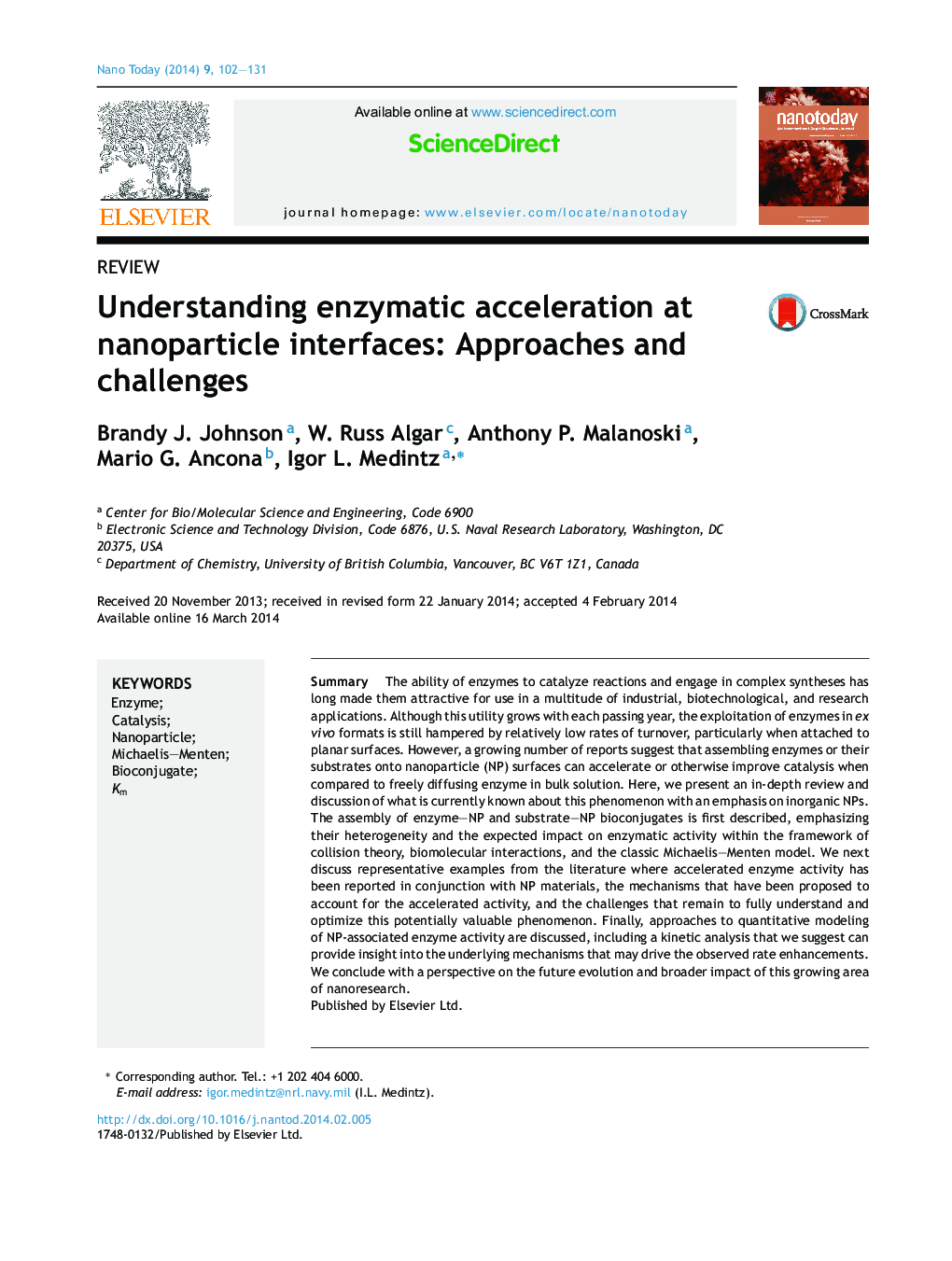| کد مقاله | کد نشریه | سال انتشار | مقاله انگلیسی | نسخه تمام متن |
|---|---|---|---|---|
| 32307 | 44921 | 2014 | 30 صفحه PDF | دانلود رایگان |
• Enzyme activity appears to be accelerated at a nanoparticle interface.
• We examine this phenomenon in the context of the current literature.
• Mechanisms that have been proposed to account for accelerated activity are highlighted.
• Approaches to quantitative modeling of nanoparticle-associated enzyme activity are discussed.
• When fully understood, this may represent an alternate mechanism to achieve enhanced enzymatic activity.
SummaryThe ability of enzymes to catalyze reactions and engage in complex syntheses has long made them attractive for use in a multitude of industrial, biotechnological, and research applications. Although this utility grows with each passing year, the exploitation of enzymes in ex vivo formats is still hampered by relatively low rates of turnover, particularly when attached to planar surfaces. However, a growing number of reports suggest that assembling enzymes or their substrates onto nanoparticle (NP) surfaces can accelerate or otherwise improve catalysis when compared to freely diffusing enzyme in bulk solution. Here, we present an in-depth review and discussion of what is currently known about this phenomenon with an emphasis on inorganic NPs. The assembly of enzyme–NP and substrate–NP bioconjugates is first described, emphasizing their heterogeneity and the expected impact on enzymatic activity within the framework of collision theory, biomolecular interactions, and the classic Michaelis–Menten model. We next discuss representative examples from the literature where accelerated enzyme activity has been reported in conjunction with NP materials, the mechanisms that have been proposed to account for the accelerated activity, and the challenges that remain to fully understand and optimize this potentially valuable phenomenon. Finally, approaches to quantitative modeling of NP-associated enzyme activity are discussed, including a kinetic analysis that we suggest can provide insight into the underlying mechanisms that may drive the observed rate enhancements. We conclude with a perspective on the future evolution and broader impact of this growing area of nanoresearch.
Figure optionsDownload high-quality image (238 K)Download as PowerPoint slide
Journal: - Volume 9, Issue 1, February 2014, Pages 102–131
